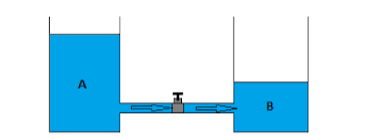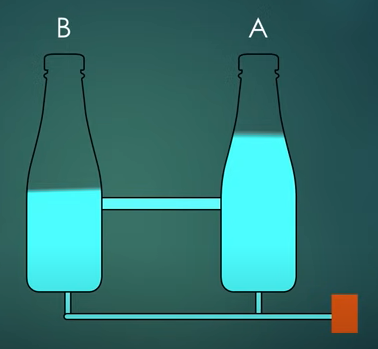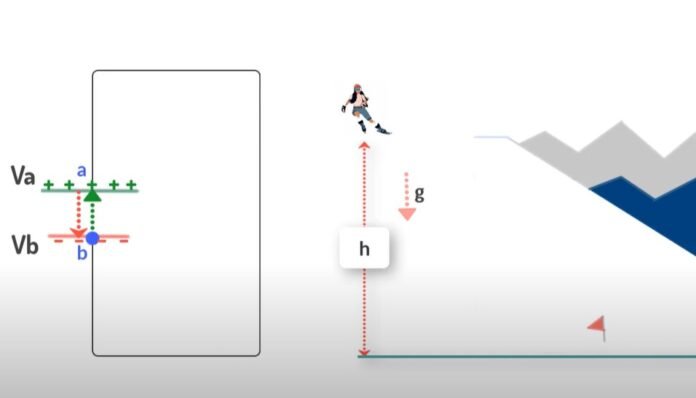The purpose of this article is to understand the difference between EMF and Voltage. You will also find many other important information that you might need to know. If you do not have time to read all of the information, then I would suggest reading the introduction sections first.
Introduction
It becomes big confusion among students that potential differences or voltage and electro-motive force or EMF are one and the same but it is not true. There is a difference between voltage and EMF. In this article, we are going to learn about what is the difference between potential difference and electro-motive force.In this article, we will discuss the difference between EMF and Voltage. EMF and Voltage both are measured in volt then how these parameters are different from each other?
We will know how the EMF and Voltage are important and the basic method which are used to calculate the EMF and Voltage.
Analogy with water bottle experiment
For better understanding let’s take an example of two bottles filled with water (as shown in the figure). The bottle is filled with water above the center line of the bottle and in the bottle, B water is filled below the center line. In technical language and in terms of electricity we can say that bottle is having an electric potential of 8 volts and bottle B is having an electric potential of 4 volts. Now if a small pipe is connected between these two bottles then what will happen?
After connecting a pipe between these two bottles water started flowing from bottle A to B. That is from higher potential to lower potential. Water is flowing because there is a difference in the water level of both bottles. Water will now continue to flow until the water level of both bottles become the same.

Fig- 1
So difference in water level is needed to make water flow from one bottle to another in technical language we can call this difference in water level a potential difference or voltage. So now we can modify this sentence as “the potential difference is needed to make electrons flow from one position to another”. So we are now clear about the potential difference or voltage
Now when the level of both the bottles is equal it has no water to flow. But if we need a continuous flow of water to do that we have to connect a device which will again create the difference in the water level of both bottles.
Now with the help of this device water will again start flowing and the water level of both bottles will become equal then the device will again create the difference in water level and water will flow again.

Fig- 2
Now, this process will keep on repeating and we will get a continuous flow of water. In technical language, we can say the device is maintaining the potential difference in water levels and once it starts maintaining the potential difference it has developed the electro-motive force or EMF
So, EMF is needed to maintain the potential difference. Because of the name, many people will think that EMF is a force but it’s not a force it’s the energy supplied by a device like a battery. So, the potential difference or voltage makes electrons flow while the electro-motive force maintains the potential difference.
Example of an electric circuit
Let’s do one more experiment here we have a battery of 9 volts and a resistance of 3 ohms connected to these resistors with the battery using a connecting wire. Now, the current flowing through this circuit is 3 amps. Using Ohm’s law we can calculate that our battery is having EMF of 9 volts which means the battery is supplying 9 joules of energy to each Coulomb.

Fig – 3
Because
Journey of each Coulomb starts with the positive terminal of the battery and then it reaches to the point A. Who traveled from point A to point B and each Coulomb will require 9 J of energy. The energy used by each Coulomb in moving from point A to point B is known as the potential difference between those two points. Thus in our example, the potential difference between point A to point B is 9 volts. This potential difference between point A and point B is sometimes also called a voltage drop. This voltage drop will cause heat from resistance. After losing most of the energy between points A and B, the charge will move toward the negative terminal of the battery. It is also to be noted each Coulomb charge will also lose some of its energy to connecting wires because it also offers some resistance to it when it returns to the negative terminal. It has lost all of its energy which was supplied by the battery and now the battery will again give 9 joules of energy to each Coulomb and the procedure we just saw will repeat again in the circuit.
Difference between EMF and potential difference (voltage)
Now, we can summarize the difference between EMF and voltage as follows:
| Sl No. | EMF | Voltage |
|---|---|---|
| 1 | EMF is required to maintain the voltage difference. | The voltage difference is needed to make electrons flow from one position to another |
| 2 | It is the maximum cell voltage. | It is less than the maximum cell voltage |
| 3 | It flows steady current in the cell. | It does not flow a steady current in the cell. |
| 4 | It is measured by the Potentiometric method | It is measured using a voltmeter |
| 5 | EMF can be calculated by the following formula:
E = I.(R + r) Where R = External resistance of the circuit r = internal resistance of the battery I = current flowing in the circuit |
To calculate the voltage of potential difference we can use simply
V = I. R Where, R = External resistance of the circuit I = current flowing in the circuit |
Recommended Articles:
Difference Between Distance And Displacement
Difference Between Earth And Neutral
Difference Between Earthing And Grounding
Difference Between Electric Field And Magnetic Field
Difference between Electromagnet and Permanent Magnet
EMF is measured by the Potentiometric method. Potential difference or voltage makes electrons flow while electro-motive force maintains the potential difference. The unit of electromotive force is a volt. Technically it is not a force it is a form of energy. Difference between EMF and Voltage FAQs
What method is used to measure EMF?
What is the main difference between EMF and voltage?
What is the unit of electromotive force?
What type of force EMF is?
